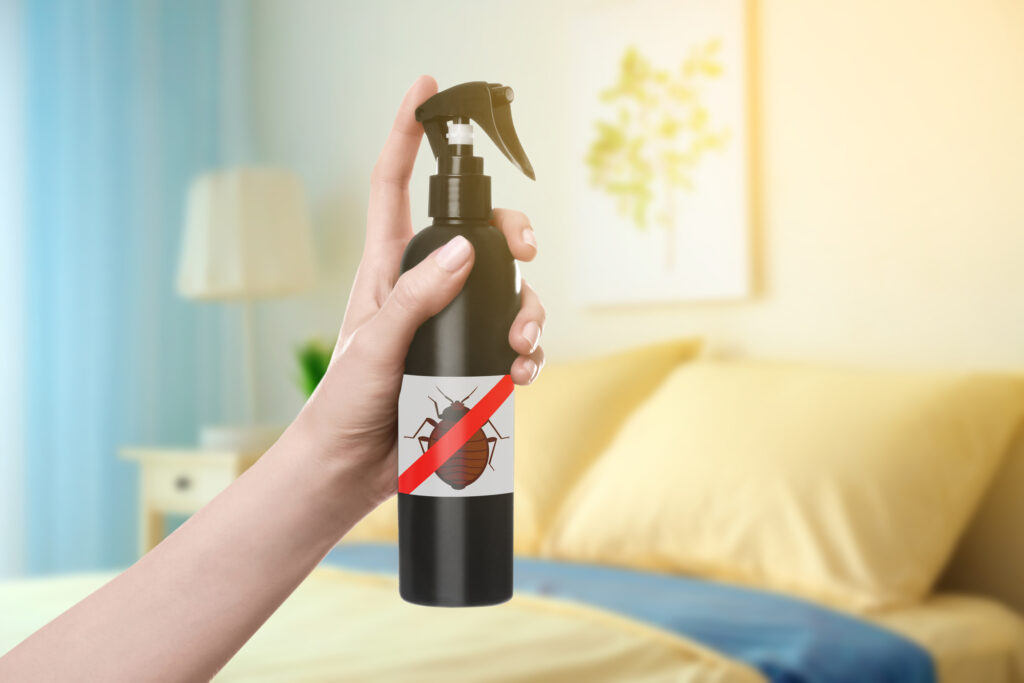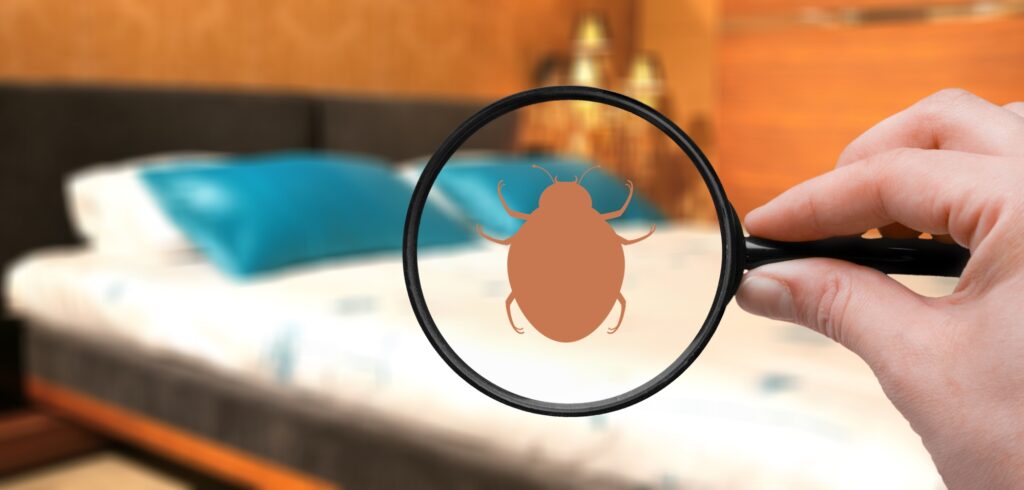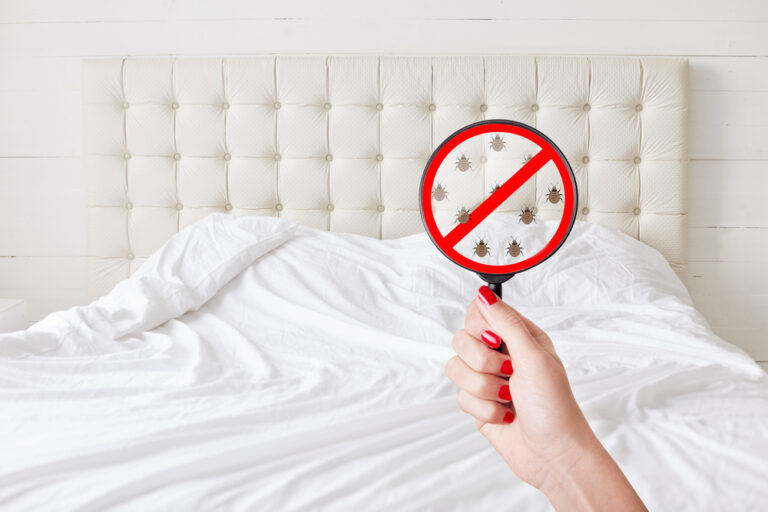Are you waking up with itchy bites on your skin and suspect that bed bugs have infested your mattress? Don’t panic, but act fast! Bed bugs can multiply quickly, making it challenging to eliminate them once they have invaded your home. This guide will provide practical tips on getting bed bugs out of your mattress using DIY solutions and professional bed bug home treatment in St. Charles, MO. We’ll also share some bed bug prevention tips to help you avoid future infestations. So, let’s get started and get your mattress bed bug-free!
Signs of Bed Bugs in Your Mattress
If you wake up with itchy bites or notice small red or brown spots on your sheets, you must check your mattress for bed bugs. Before we jump into bed bug removal solutions, we must know the signs of a bed bug infestation. Some common symptoms include:
- Bed bug feces
Bed bugs leave behind small, dark droppings on your sheets or mattress. These droppings are typically the size of a pinhead and may appear as small clusters or smears.
- Blood stains
Bed bugs feast on human blood while we sleep. You likely have bed bugs if you wake up with unexplained bites or notice bloodstains on your sheets or pajamas.
- Musty odor
Bed bugs release pheromones that have a sweet, musty odor. A robust and unpleasant smell from your mattress or bedding could indicate a bed bug infestation.
- Exoskeletons and eggs
Bed bugs lose their skins as they mature, leaving their exoskeletons behind. Tiny white eggs or eggshells may also be on your mattress or bedding.
- Itchy bites
Bed bug bites are usually painless initially but can become itchy and inflamed. They frequently form as a line or cluster on your skin, particularly around your ankles or legs.
It’s worth considering that bed bug bites may not affect everyone, so you could have a bed bug infestation without any visible edges. Therefore, if you think you might have bed bugs, it’s crucial to act promptly to avoid the infestation from spreading.

DIY Solutions for Bed Bug Removal
While do-it-yourself (DIY) solutions can be tempting for bed bug infestations, hiring a professional exterminator is generally recommended. However, if you choose to tackle the problem yourself, here are four critical considerations:
- Limited Effectiveness: DIY methods often need more potency and a comprehensive approach to professional treatments. Bed bugs are resilient pests, capable of hiding in various places. Without professional-grade products and equipment, you may not eliminate the infestation, allowing it to rebound.
- Inadequate Knowledge: Professional exterminators have extensive training and experience in identifying bed bug hiding spots, understanding their behavior, and using appropriate treatments. DIY attempts may miss critical areas, allowing the infestation to persist and spread.
- Risk of Spreading: Bed bugs can easily hitch a ride on clothing, furniture, or other items, leading to unintentional spread during DIY treatments. Professionals are skilled in containing and minimizing the risk of dispersal, ensuring the infestation doesn’t spread to other areas of your home.
- Health and Safety Concerns: DIY methods may involve potentially hazardous chemicals. Without proper knowledge and precautions, you may inadvertently expose yourself, your family, or your pets to harmful substances. Professionals are trained in the safe and practical application of pest control products.
While DIY solutions might offer temporary relief, bed bug infestations are challenging to eradicate without professional intervention. Hiring a reputable exterminator increases the likelihood of successful eradication and ensures the safety of your home and loved ones.

Professional Bed Bug Extermination Options
If DIY solutions don’t work or the infestation is severe, it’s time to consider professional bed bug extermination options. Many affordable bed bug exterminators in St. Charles, MO, can provide effective solutions. Professional exterminators can access specialized equipment and treatments that effectively eliminate bed bugs. Here are some options to consider:
- Heat Treatment
- Heat treatment refers to increasing the temperature inside your home to a point that is fatal to bed bugs. This method is effective because bed bugs cannot survive at high temperatures. Professional exterminators use special equipment to raise the temperature in your home to between 120 and 135 degrees Fahrenheit. Heat treatment kills bed bugs and their eggs without the need for chemicals.
- Insecticide Treatment
- Insecticide treatment involves the use of pesticides to kill bed bugs. Professional exterminators use special insecticides that are safe for humans and pets but lethal to bed bugs. They apply insecticide to your mattress, bedding, and other soft furnishings to kill bed bugs and their eggs. This method may require multiple treatments for several weeks.
- Freezing Treatment
- Freezing treatment involves exposing your mattress and other soft furnishings to temperatures lethal to bed bugs. Professional exterminators use special equipment to lower the temperature in your home to below freezing, which kills bed bugs and their eggs. This method is effective because bed bugs cannot survive in extreme temperatures.
Bed Bug Prevention Tips
Preventing bed bugs is much easier than getting rid of them. Take note of some tips to avoid bed bugs from infesting your home:
- Check second-hand furniture and bedding before bringing them into your home.
- Keep your home clean and clutter-free
- Use mattress encasements that specifically target bed bugs.
- Vacuum your mattress and other soft furnishings regularly.
- Seal any openings and crevices to prevent bed bugs from entering your house.
- Before unpacking in a hotel room, inspect it thoroughly for signs of bed bugs. Check the mattress, headboard, and surrounding furniture for bloodstains, fecal matter, or bed bug exoskeletons.
- Avoid placing your luggage on the hotel room floor or bed. Instead, use a luggage rack or put your luggage in the bathroom, as it is less likely to harbor bed bugs.
- When you return from a trip, check your baggage and clothing for bed bugs before bringing them into your house. Launder your clothes in hot water and dry them on high heat to eliminate any bed bugs or eggs attached to them.
- Consider using bed bug interceptors beneath the legs of your bed to trap bed bugs as they attempt to climb up the bed’s legs.
- Be cautious when using shared laundry facilities, as bed bugs can quickly spread from one person’s clothing to another’s. Inspect the machines and the area around them for any signs of bed bugs before using them.
DIY or Professional: Choose Your Solution!
In summary, getting bed bugs out of your mattress can be daunting, but it is not impossible. With the right approach, tools, and persistence, you can rid your home of these pesky insects once and for all. Whether you use DIY solutions or hire professional exterminators, it’s critical to act swiftly and take preventive measures to avoid repeat infestations. You may sleep comfortably knowing that your mattress is bed bug-free if you follow the advice in this tutorial. So, don’t wait any longer; start taking action today and say goodbye to those unwelcome bed bugs!






